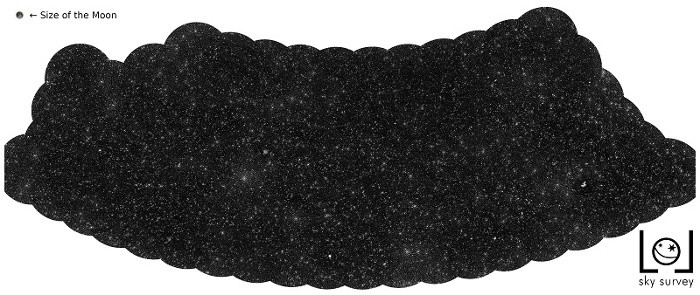LOFAR space survey used the device to capture a new mesmerizing image of the blank space filled with white dots that are black holes and not the usual stars, suns, and moons. The focus of the study is to create a "black hole map" spread throughout the universe, and it only shows the massive unknown worlds out there.
LOFAR Space Survey: Black Holes Looking Like Stars

The LOw Frequency ARray (LOFAR) space survey that an international team of astronomers captured shows a total of 25,000 black holes in the sky. Simply looking at its image can confuse it for a cluster of stars in the galaxy.
Researchers from the University of Leiden, Netherlands, gathered a team to investigate these black holes spread throughout the galaxy. The map they created pinpoints the location of these black holes that glisten in the blank space.
The research entitled "The LOFAR Sky Survey" used the radio telescope with a high-resolution and high-sensitivity device, operating at low frequencies. The instrument set its parameters to capture the said black holes, which shows this astonishing image, looking like stars in space.
Black Hole Map Captured by LOFAR Device
The research aims to create a map of the black holes and determine the locations from the astronomers' perspective. It helps bring knowledge to people, especially other researchers that would study it.
The space's dark sky shows the vast worlds out there, especially the surrounding black holes present in its vicinity.
Black Holes and its Relevance
Before, a study already focused on black holes and creating a map for them, and the eROSITA showed how the device spots the massive negative spaces in the cosmic landscape. However, the difference between the new study and the eROSITA's is that it showed substantial black holes and only a few of them in its sweep of the Milky Way galaxy.
People should be wary about the black holes present in the galaxy as it has the power and capability to suck the planet whole and rid us of the place we have in the solar system.
Not to mention the great unknown that lies on the other side of the black hole that would genuinely result in massive problems as it would change the world as we know it.
One of the many phenomenons near a black hole is NASA's enigmatic heartbeat with the gamma-ray telescope from a cosmic cloud.
Black holes are not just a few in the galaxy. In fact, there are thousands out there that are still unknown to the public. Studies like this can help pinpoint their locations, particularly as the LOFAR device and the research demonstrated.
Related Article : Space Experts Claim Pluto Should Be Re-Classified as a Planet; IAU Decision is Not Based on Science?
This article is owned by Tech Times
Written by Isaiah Richard
ⓒ 2025 TECHTIMES.com All rights reserved. Do not reproduce without permission.




